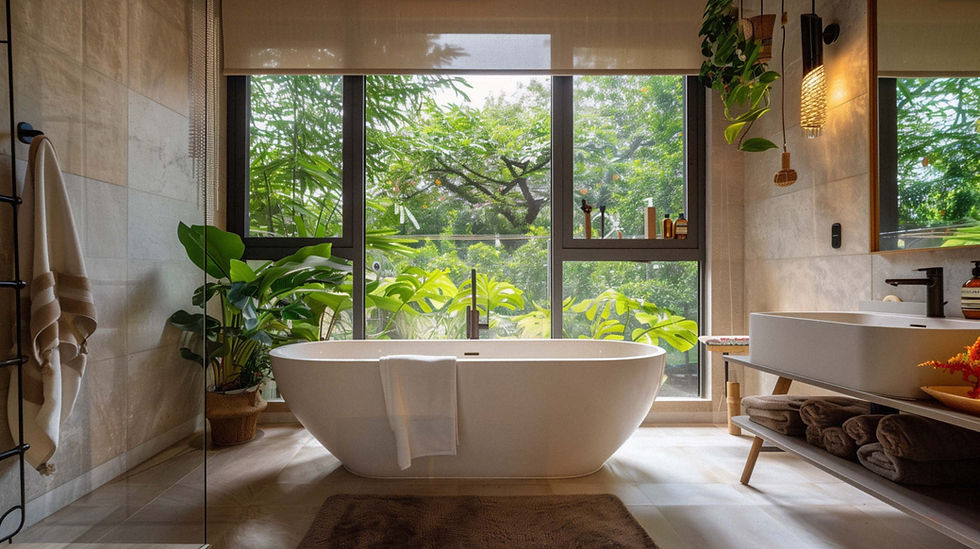Exploring the Most controversial architect quote in History
- Dennis Asis

- May 31, 2025
- 3 min read

Architecture is as much about ideas as it is about structures. Over the years, various architects and thinkers have shared quotes that spark debates and provoke thoughts, sometimes even igniting controversy. Below, we explore some of the most debated quotes in architectural history, examining the context and reception surrounding them.

"Less is more." - Ludwig Mies van der Rohe
This phrase has become synonymous with minimalist architecture, suggesting that simplicity leads to elegance. Mies van der Rohe's assertion reflects a philosophy that prioritizes functionality and clarity over unnecessary ornamentation. In practice, this principle can be seen in iconic buildings like the Barcelona Pavilion, where open spaces and clean lines create a sense of tranquility.
However, critics argue that this perspective can overlook important emotional and aesthetic dimensions of architecture. While many praise the beauty of minimalist designs, others feel that an overemphasis on simplicity can lead to sterile environments lacking warmth. A study on public perception of minimalist spaces indicates that 68% of participants felt such spaces could feel impersonal.

"Form follows function." - Louis Sullivan
Louis Sullivan, the father of the modern skyscraper, championed the idea that the design of a building should be driven primarily by its intended use. This quote has fueled countless discussions in architectural circles about the relationship between form and function.
Supporters appreciate how this principle can lead to highly efficient, purpose-driven designs, exemplified by Chicago's Auditorium Building, which combines function and beauty seamlessly. Yet, detractors contend that it risks oversimplifying architecture, reducing it to mere utilitarianism and overlooking emotional and artistic aspects. Some critics argue that using this philosophy as a sole design principle might yield buildings that lack soul, reducing unique architectural identity. most controversial architect quote

"Architecture is the mother of all arts." - Paul Valéry
Valéry's assertion positions architecture as a foundational element of all art forms, underscoring its significance in shaping human experience and culture. This idea catalyzes a rich discussion about the role of architecture in society and its influence on other artistic expressions.
Some celebrate this notion, emphasizing architecture's ability to engage and inspire. Iconic structures like the Guggenheim Museum in Bilbao demonstrate how architecture can evoke emotion and contribute richly to cultural identity. Others argue that this view places an undue burden on architects, insisting they must bear the weight of every artistic endeavor, which may go beyond the scope and intention of architectural practice.

"God is in the details." - Ludwig Mies van der Rohe
Another impactful statement by Mies van der Rohe, this phrase suggests that the finer elements of design are crucial to a building's success. Many architects embrace this notion, arguing that a meticulous focus on details enhances both functionality and aesthetic quality. For example, the intricate craftsmanship found in the Farnsworth House exemplifies how attention to detail completes a design.
However, this focus on minutiae has also faced criticism. Some critics feel that emphasizing details can lead to architectural projects that fail to address broader themes. They argue for a holistic approach where the building harmonizes with its environment and serves its purpose meaningfully. A 2022 survey found that only 45% of architects felt that intricate details should prioritize over the overall concept in design decisions.

Reflection on Architectural Discourse controversial architect quote
The quotes explored here highlight the richness of architectural discourse. Each statement provokes vital questions about the balance between function and aesthetics, simplicity and complexity, and the broader role of architecture in art and human experience.
As debates over these quotes continue, they remind us that architecture is not solely about structures. It is inherently tied to cultural narratives and individual experiences. By challenging accepted wisdom, architects and thinkers extend the boundaries of what is meaningful in our built environments, fostering ongoing discourse that can enrich the field of architecture for generations to come.
Head over to our Resource Section for additional and useful Architectural References.




Comments